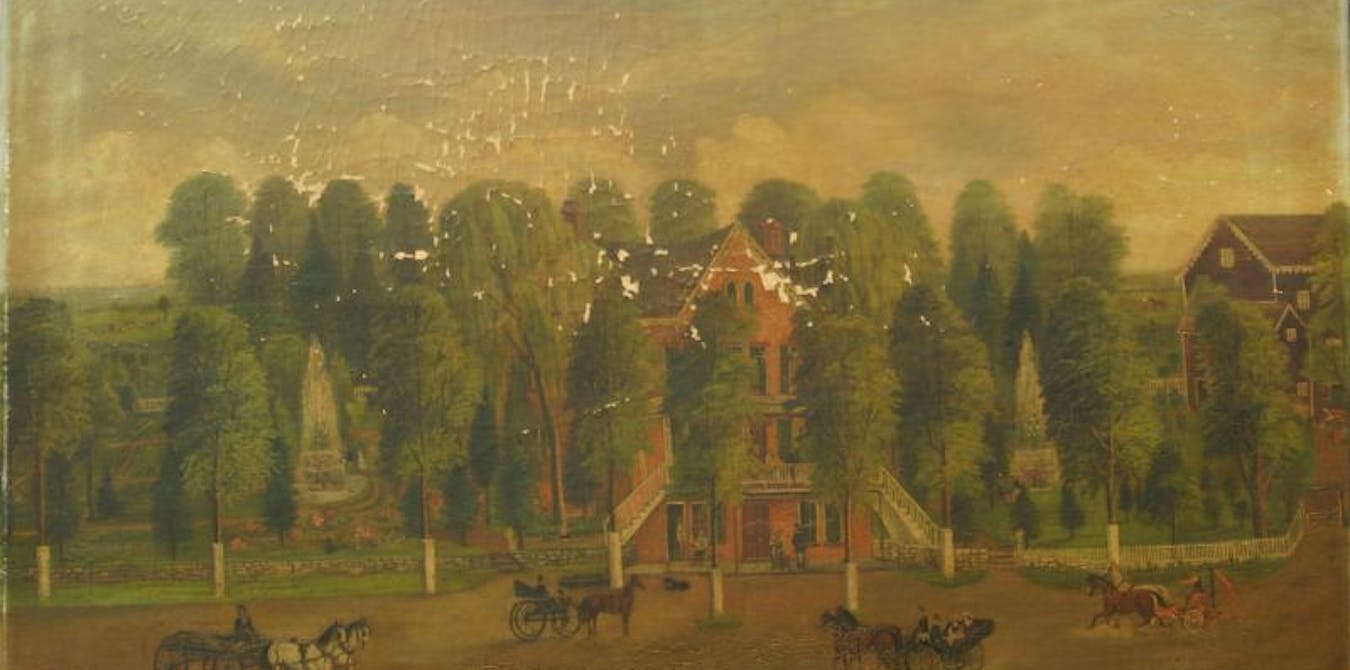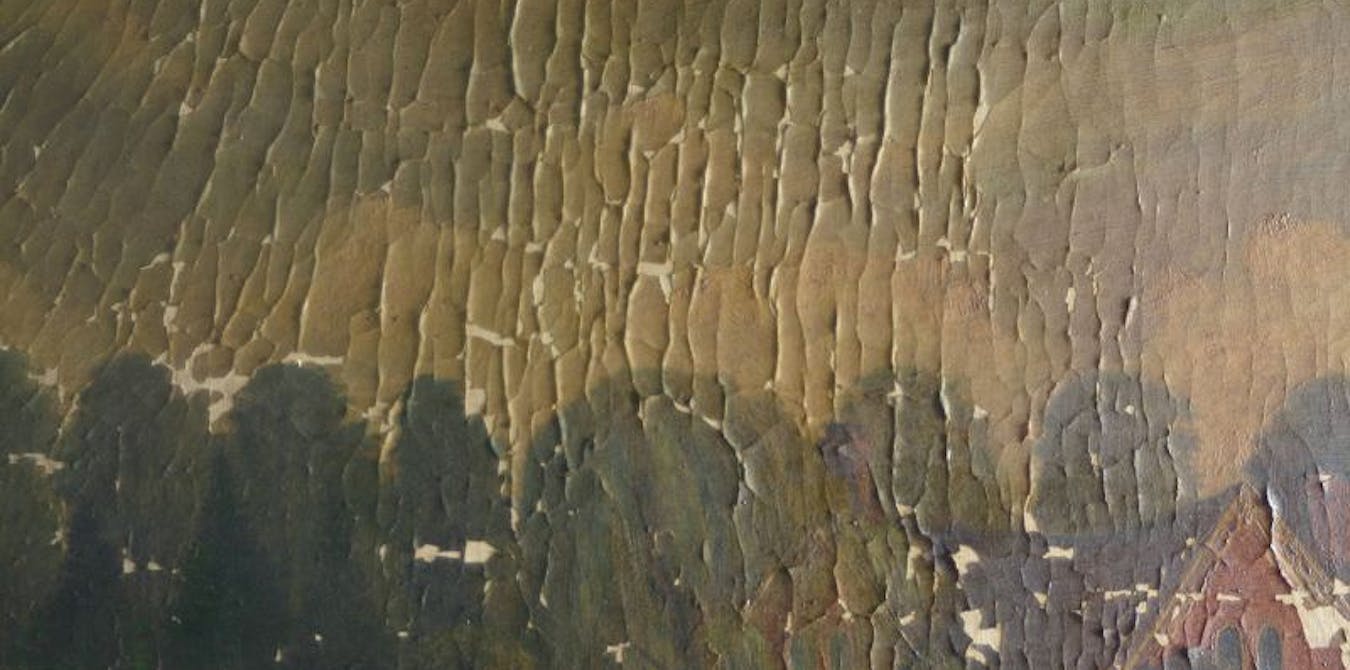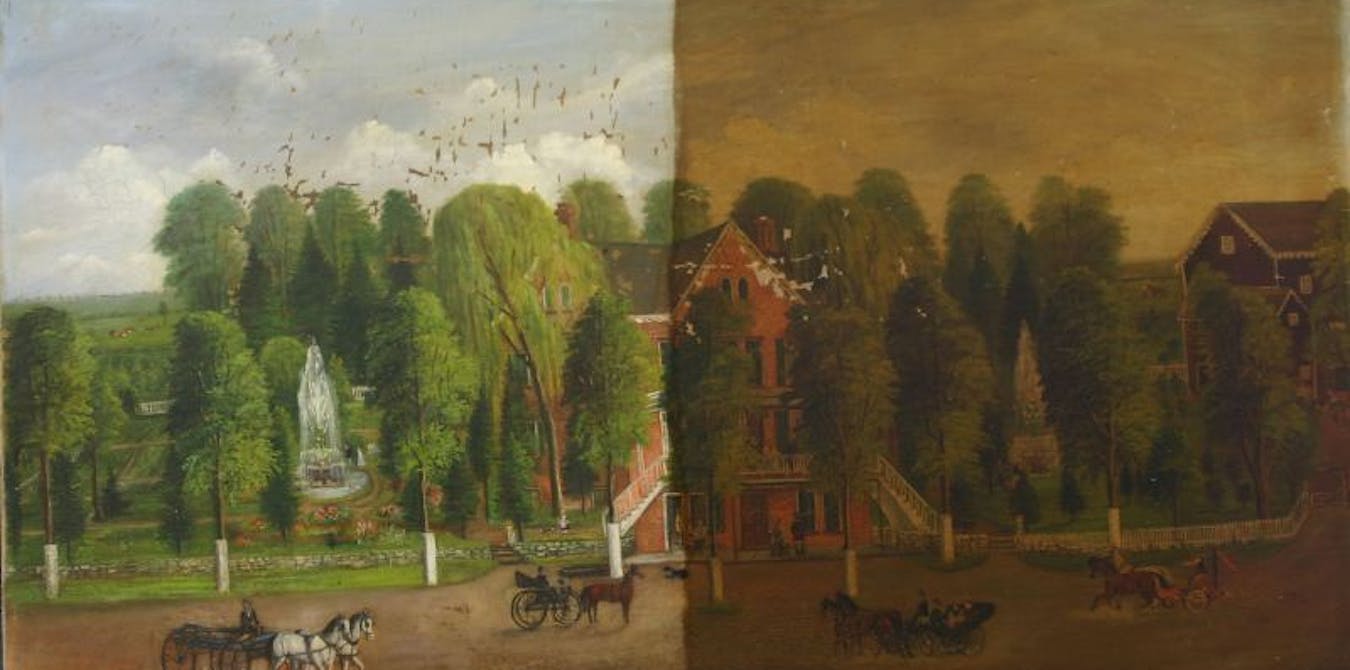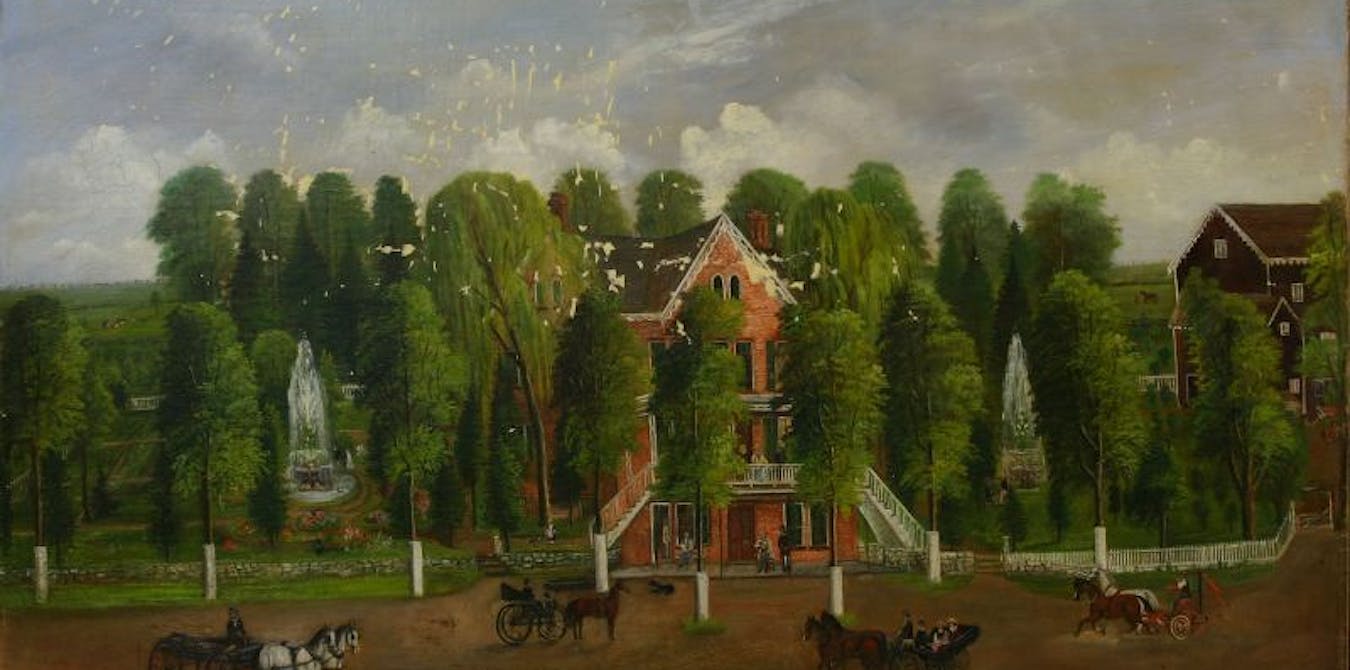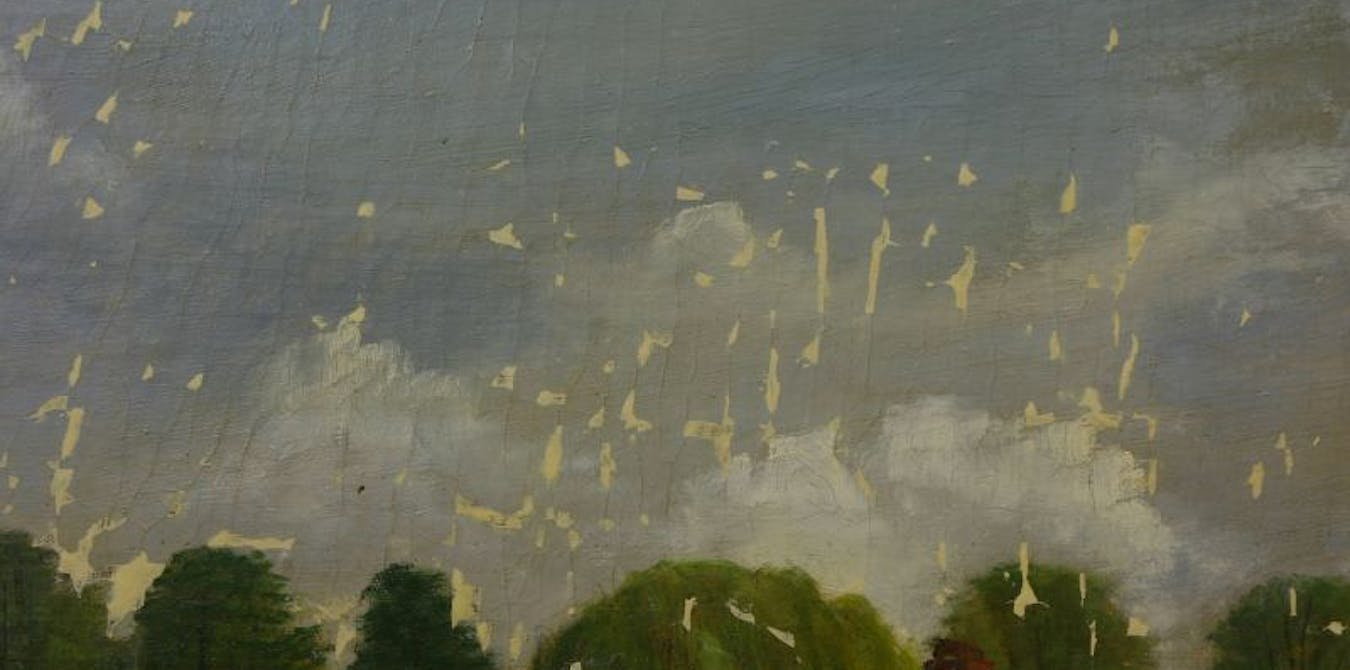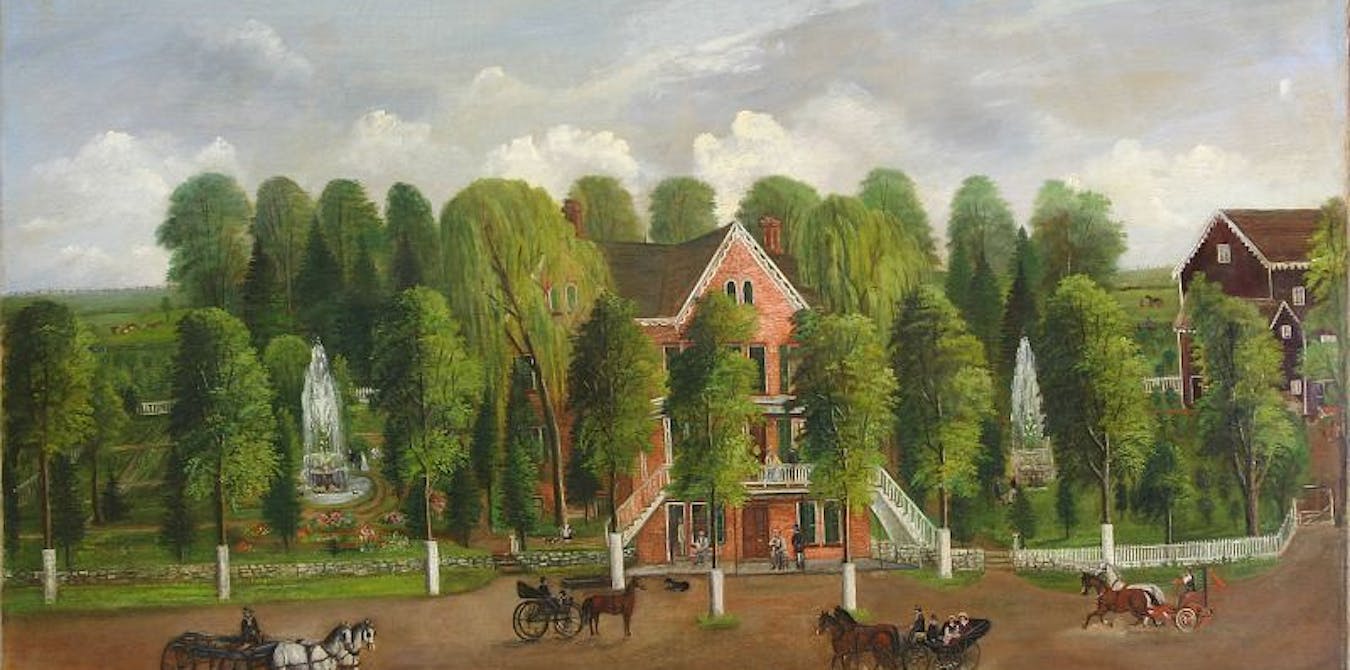Lifting the Smog from the Fountain Inn
The art: The Fountain Inn, by Louis Larsen
The restoration: This was about as challenging as art conservation gets. The Fountain Inn arrived covered in a thick layer of soot, grime, and cigarette smoke residue. As if that wasn't enough, it was further discolored by a dull varnish so that the entire painting looked like it was being smothered by a thick smog. The paint underneath was unstable and missing altogether in several spots. Even more discouraging, it was tenting—lifting from the canvas—in places.
Earlier art conservation left the painting abraded, a technical term for worn down almost to the point of tearing. To fully understand just how delicate it was, we removed the painting from the frame and examined it under high magnification and ultraviolet light. There, it became clear that The Fountain Inn needed relining.
Once the canvas was faced and detached from its stretcher, the tented and water-damaged paint was brought into plane using a method called the "burnt finger," which entails light moisture and a small tacking iron. (No harm came to our conservators' fingers.) The back of the canvas was scraped with a scalpel to remove dirt and weave imperfections.
The painting was then placed on a vacuum-pressure hot table, where it was given a light moisture treatment that was intended to moisturize the canvas and the paint, which had become brittle. A secondary support was treated with a thermoplastic adhesive and joined to the canvas on the hot table. The painting was reattached to its stretcher and the facing was removed. We then began testing cleaning solvents along an edge. Slowly (very slowly), but surely, we made progress, erasing that thick residue in tiny segments.
After a coat of varnish, the eroded spots were filled and textured to match the original brushwork, then in-painted with restoration paints. One more coat of varnish and the resurrection of The Fountain Inn, almost impossibly, was complete.


